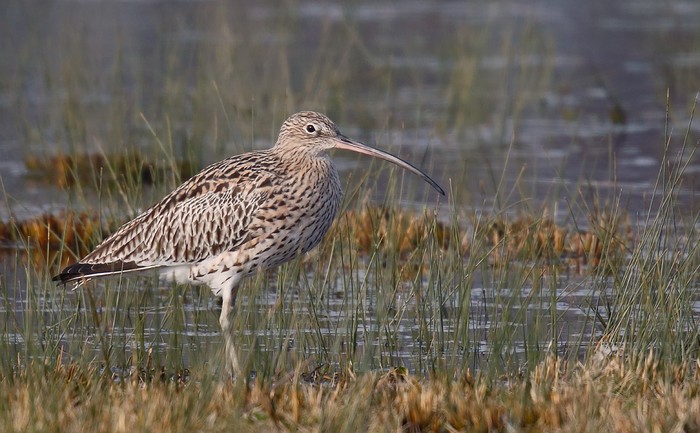Iconic Welsh bird disappearing

The latest Breeding Bird Survey (BBS) report, recently published, shows that the Welsh breeding Curlew population has fallen by 68% between 1995 and 2017, not good news for a bird that has long been associated with Welsh upland and farmland.
As a result of the precipitous decline in breeding numbers, the Curlew is one of UK’s most pressing conservation issues. Its decline in Wales is mirrored with an overall decline of 48% across the UK. BBS data were analysed to look at what might be causing the decline. As a ground nesting species, Curlew faces lots of different pressures during the breeding season. Destruction of peat bogs, afforestation, farmland intensification and land abandonment no doubt affect the availability of breeding habitat for Curlew, with predation also adding to the pressure. Intensive management of lowland grasslands could be exasperating the situation and climate change is also seen as a threat.
It’s not good news for Welsh Swifts either; their breeding population is down by 69% over the same period. The reasons for this decline aren’t fully understood but this species almost exclusively nests in buildings. So, a loss of nesting space could be having a toll, with many of the holes that Swifts use to access our roof spaces for nesting getting blocked as we make our homes more energy efficient.
Providing a nest box under the eaves of a roof can help replace those lost nooks and crannies. Of course, little is known about their migration route and wintering grounds and pressures they might face during this period of their annual life cycle.
It’s not all bad news, Great Spotted Woodpeckers are finding Welsh woodland to their liking and the breeding population increased three-fold between 1995 and 2017.
Sarah Harris, Breeding Bird Survey Organiser at the British Trust for Ornithology (BTO), said, “The sound of the first Swift screaming overhead in spring or the bubbling song of a territorial Curlew are among the best sounds in birding and always bring a smile to my face. It is worrying to see the long-term trends for these species each year and only time will tell what affect our changing climate will have on these birds in the future. Without the efforts of hundreds of volunteers in Wales, we would not have these figures to help prompt further research and conservation action. Thank you to all who take part”
Mark Eaton, RSPB Principal Conservation Scientist, said “Knowing how bird populations are increasing or decreasing is fundamental to bird conservation and the long term trends for population changes in this new BBS report are a very important indicator of the health of our countryside. BBS trends shows how our bird populations have fared since 1994 and are used to identify the species most needing conservation help: they are a crucial component of the Birds of Conservation Concern assessments which identify the red list, of species of greatest conservation concern.”
The BTO/JNCC/RSPB Breeding Bird Survey is a partnership jointly funded by the BTO, RSPB and JNCC, and the report is published by BTO annually on behalf of the partnership. The full report can be accessed here.
7 May 2019
Share this story




